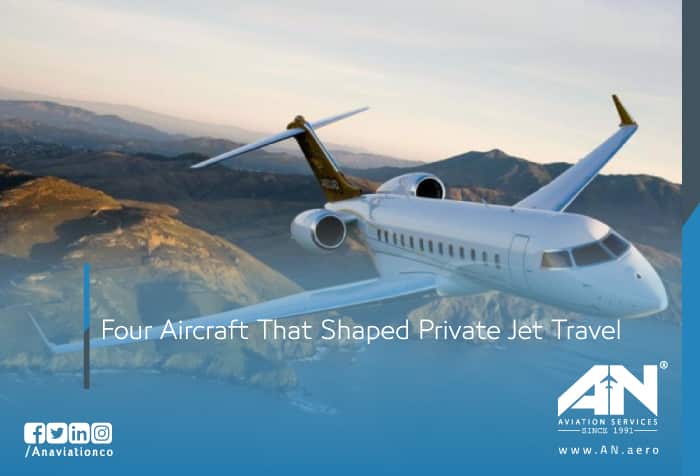
The world of private jet travel has grown immensely over the years, transforming from a luxury reserved for the elite few into a key player in business and personal aviation. What makes this possible? Game-changing aircraft that have shaped how people travel privately and set new benchmarks for comfort, performance, and accessibility. Let’s take a closer look at four iconic aircraft that have redefined private jet travel, each leaving a lasting mark on the aviation industry.
1. Learjet 23: The Birth of Private Jet Travel
When it comes to the origins of private jet travel, the Learjet 23 holds a special place in aviation history. Introduced in the early 1960s, this business jet was a pioneer, designed specifically for private use rather than military or commercial purposes.
The Learjet 23 was sleek, fast, and reliable, offering passengers an unprecedented level of privacy and convenience. It featured a compact cabin ideal for executives, allowing them to save time on travel and boost productivity.
Its ability to operate from smaller airports also set the tone for how privately chartered jets could bypass the hassle of crowded commercial terminals, which remains a key advantage of private aviation today. Without the Learjet 23, the private jet sector might not have evolved as quickly into what it is today.
2. Gulfstream G-IV: Luxury and Range Redefined
The Gulfstream G-IV, launched in the 1980s, became synonymous with luxury and long-range performance. This business jet introduced larger cabins, offering enough space to truly relax or conduct business mid-flight. With the ability to fly non-stop over transcontinental distances, it was a favorite among corporate executives and celebrities alike.
Not only did the G-IV set a new standard for private jet travel, but it also redefined what passengers could expect in terms of in-flight amenities. From plush seating to state-of-the-art technology, this aircraft proved that private jets weren’t just about speed and convenience but also about crafting a premium travel experience.
Even today, Gulfstream jets are considered among the most luxurious options for those looking to charter private flights, showcasing the enduring legacy of the G-IV.
3. Cessna Citation Excel: The People’s Private Jet
If the Learjet 23 made private jets a reality and the Gulfstream G-IV elevated the luxury aspect, the Cessna Citation Excel brought private jet travel closer to a broader audience. Known for its versatility and cost-effectiveness, this business jet blended performance, affordability, and comfort in a way that made private aviation more accessible to smaller businesses and families.
The Citation Excel offered a spacious cabin and the ability to operate out of smaller regional airports, which increased flexibility for privately chartered flights. Its competitive pricing made it one of the most popular options in the air charter market, appealing to those who wanted the benefits of a private jet without the steep price tag associated with larger jets.
This model proved that private jet travel wasn’t limited to CEOs and celebrities, paving the way for new entrants into the private aviation world.
4. Bombardier Global 7500: The Pinnacle of Private Jet Innovation
The Bombardier Global 7500 is a modern marvel in private jet travel, representing the pinnacle of what today’s aviation technology can achieve. This jet stands out for its unparalleled range—capable of flying non-stop for up to 7,700 nautical miles—making it ideal for long-haul flights and intercontinental travel.
Its cabin design is another game-changer, offering zones for work, relaxation, and even sleep, all while flying at remarkable speeds. The Global 7500 also features cutting-edge noise-reduction technology, ensuring a peaceful journey, even during high-altitude cruising.
For business leaders or individuals who value time efficiency and comfort, the Bombardier Global 7500 is more than a jet—it’s a mobile office, a hotel, and a sanctuary in the skies. This aircraft highlights how far private jet travel has come, blending luxury with advanced engineering to meet the evolving needs of passengers.
The Impact of These Aircraft on Private Jet Travel
Each of these aircraft has played a unique role in shaping private jet travel as we know it today. From the Learjet 23’s introduction of private flying to the Global 7500’s ability to shrink the world for its passengers, these jets have made private aviation faster, more luxurious, and more accessible than ever before.
Moreover, the evolution of these jets has influenced how the air charter industry operates, making it possible for individuals and businesses to customize their travel experience. Whether it’s a short regional hop or a transcontinental journey, private aviation now caters for a wide range of needs, all thanks to innovations introduced by these remarkable aircraft.
Conclusion
The journey of private jet travel is a story of constant evolution, driven by game-changing aircraft that set new benchmarks for performance, comfort, and accessibility. The Learjet 23, Gulfstream G-IV, Cessna Citation Excel, and Bombardier Global 7500 represent key milestones in this journey, each offering something unique to the world of private aviation.
As the industry continues to innovate, one can only imagine what the next generation of business jets will bring—perhaps even greater range, sustainability, or customization. For now, these four iconic aircraft remind us how far private aviation has come, offering a glimpse into a future where the skies remain the ultimate frontier for luxury and innovation.

